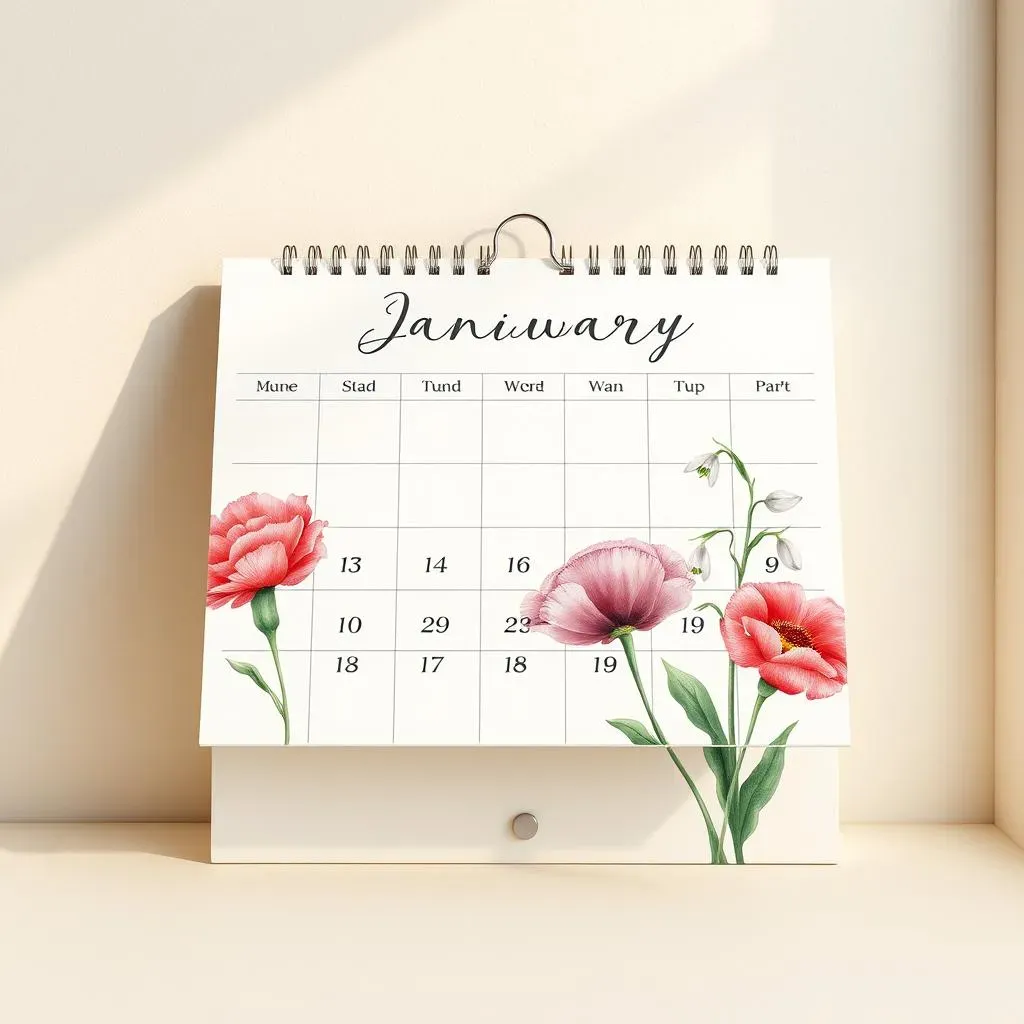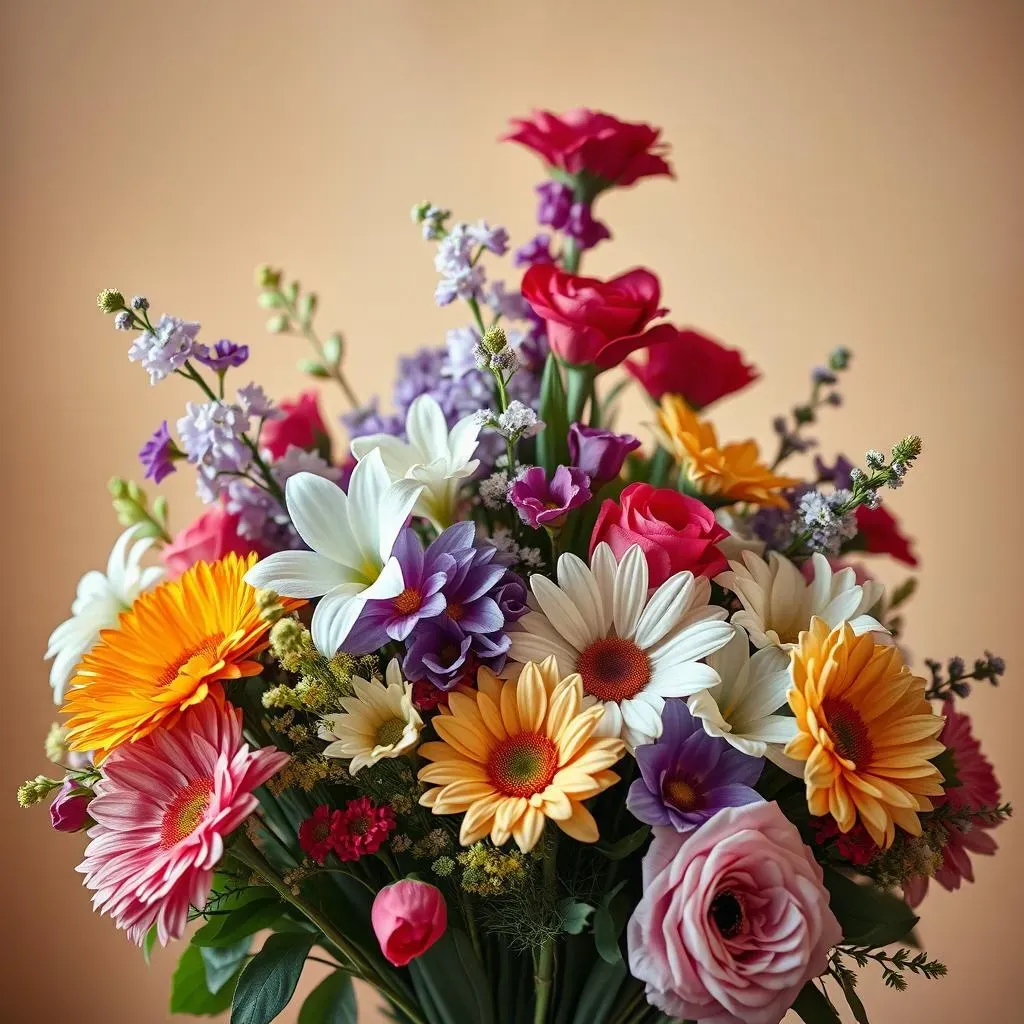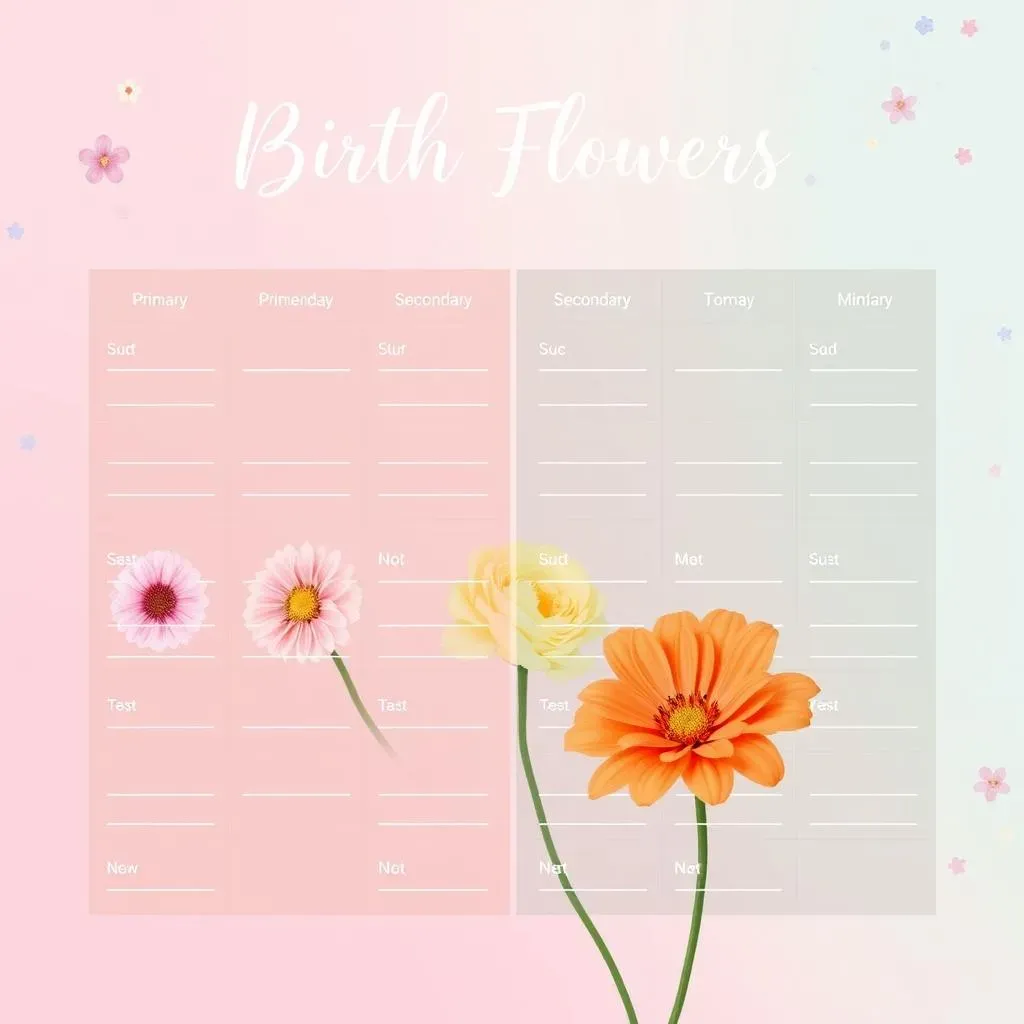Table of Contents
Have you ever wondered what flower perfectly embodies your birth month? Or perhaps you're searching for the ideal floral gift for a loved one, and want something truly special and meaningful. This article is your guide to the enchanting world of birth month flowers! We'll explore the question, "what are the birthday flowers for each month?", uncovering the rich history and symbolism behind each bloom. We'll journey through the calendar year, discovering the primary and secondary flowers associated with each month and delving into their unique meanings and cultural significance. Prepare to be charmed by the vibrant tapestry of floral beauty and the fascinating stories they tell. Whether you're a seasoned flower enthusiast or simply curious about this age-old tradition, get ready to discover the perfect bloom that resonates with your personality or that of someone you care about. Let's dive into the captivating world of birth month flowers and unlock their secrets!
What Are the Birthday Flowers for Each Month? A Comprehensive Guide
What Are the Birthday Flowers for Each Month? A Comprehensive Guide
A Bit of History: The Roots of Birth Month Flowers
The tradition of assigning flowers to specific months isn't a recent fad; it's got roots stretching back centuries! Think ancient Greeks and Romans, who associated flowers with gods, goddesses, and various aspects of life. Over time, these associations evolved, becoming intertwined with folklore and cultural beliefs. Different cultures adopted and adapted the tradition, leading to slight variations in the flowers assigned to each month. But the core idea remains the same: each month gets a floral representative, adding a touch of elegance and symbolism to birthdays and other celebrations.
This rich history adds a layer of depth to the simple act of giving flowers. It's not just about the beauty of the bloom; it’s about the story it carries, the connection to the past, and the unique meaning it holds for the recipient. Imagine receiving a bouquet of carnations in January – it’s not just a pretty present; it’s a nod to a tradition that’s spanned centuries, a thoughtful gesture that connects you to the past and the symbolism of the flower itself.
Month | Primary Flower | Secondary Flower |
|---|---|---|
January | Carnation | Snowdrop |
February | Violet | Primrose |
March | Daffodil | Jonquil |
The Two-Flower Tradition: Why Two Blooms Per Month?
You might notice that most months have *two* designated birthday flowers. Why the double dose of floral delight? Well, it’s partly about availability and variety. Not all flowers bloom in every region, at every time of year. Having a primary and a secondary flower allows for greater flexibility, ensuring there’s a suitable bloom to represent each month, regardless of geographical location or the specific time of year. It also offers a wider range of symbolism and meanings, reflecting the diverse personalities of individuals born in that month.
The secondary flower often complements the primary one, adding another layer of meaning or symbolism. For instance, while the primary flower for January is the carnation (often associated with love and fascination), the secondary flower, the snowdrop, symbolizes hope and new beginnings – a perfect representation of the fresh start a new year brings. This dual approach enriches the tradition, allowing for a more nuanced and personalized interpretation of birth month flowers.
- Increased choice for gift-givers.
- Accounts for regional differences in bloom times.
- Adds depth to the symbolic meaning of each month.
Navigating the Floral Calendar: A Month-by-Month Exploration
Let's embark on a delightful journey through the year, exploring the unique flowers associated with each month. We'll delve into the symbolism behind each bloom, uncovering its hidden meanings and cultural significance. From the delicate snowdrop of January to the vibrant poinsettia of December, each flower tells a story, reflecting the personality and characteristics often associated with those born under its reign. Get ready to be amazed by the diversity and beauty of the floral world and the rich tapestry of symbolism it weaves.
This exploration isn't just about memorizing a list; it’s about appreciating the artistry and symbolism inherent in nature’s bounty. Understanding the meanings behind these flowers allows you to choose the perfect bloom to express your feelings or to celebrate a special occasion. So, let's begin our floral adventure, one month at a time, and discover the beauty and significance of birth month flowers.
Exploring the Symbolism: Meanings Behind Each Month's Birthday Flowers
Exploring the Symbolism: Meanings Behind Each Month's Birthday Flowers
Exploring the Symbolism: Meanings Behind Each Month's Birthday Flowers
So, you're diving into the symbolism of birth month flowers? That's fantastic! It's more than just pretty petals; each flower carries a rich history of meaning, often tied to mythology, folklore, and cultural traditions. For example, the January carnation, with its vibrant colors, often represents fascination and love, while the delicate snowdrop symbolizes hope and new beginnings, perfectly reflecting the fresh start of a new year. February's violet whispers tales of modesty and faithfulness, while the primrose speaks of youthful beauty and first love. It's like unlocking a secret code, revealing a deeper layer of meaning behind each bloom. Think of it as a floral language, a way to express emotions and sentiments through the choice of flower.
Month | Flower | Symbolism |
|---|---|---|
March | Daffodil | New beginnings, rebirth, happiness |
April | Daisy | Innocence, purity, new beginnings |
May | Lily of the Valley | Return of happiness, sweetness, humility |
Consider the cultural context too. Different cultures might attribute different meanings to the same flower. A rose, for example, universally symbolizes love, but its specific shade can change the nuance. A red rose screams passionate love, while a white rose speaks of purity and innocence. The depth of meaning is incredible, making the choice of birth month flower a really thoughtful gesture. It's a conversation starter, a way to connect with someone on a deeper level, and an opportunity to share the rich history and symbolism behind the chosen bloom. It's not just about the aesthetic; it's about the story.
- Research the specific flower's history and meaning.
- Consider the recipient's personality and preferences.
- Explore the cultural significance of the flower.
As you explore this topic further, remember to consider the color of the flower as well. The color adds yet another layer to the symbolism. A yellow rose, for instance, signifies friendship, while a pink rose represents grace and gentleness. Even the same flower in different colors can have wildly different meanings. This adds complexity and makes the language of flowers even more fascinating. It's a subtle art, a way to express oneself through the delicate nuances of color and form. It's a true testament to the power of floral symbolism.
Beyond the Basics: Choosing the Perfect Birthday Flower for Every Occasion
Beyond the Basics: Choosing the Perfect Birthday Flower for Every Occasion
Beyond the Basics: Considering the Occasion
So, you've got the birth month flowers down pat. Fantastic! But choosing the perfect birthday flower goes beyond just matching the month. Consider the recipient's personality. Is your friend bold and vibrant? Then a bright sunflower or a dramatic gladiolus might be perfect. Is your loved one more delicate and refined? Maybe a sweet pea or a lily of the valley would be a better fit. The occasion itself matters too. A casual birthday might call for a cheerful daisy, while a more formal celebration might warrant the elegance of a rose. Think about the message you want to convey. Do you want to express love, friendship, or admiration? The flower you choose should reflect that sentiment.
Personality | Suggested Flower |
|---|---|
Bold & Vibrant | Sunflower, Gladiolus |
Delicate & Refined | Sweet Pea, Lily of the Valley |
Cheerful & Playful | Daisy, Sunflower |
Beyond the Basics: Color and Meaning
Color plays a huge role in the symbolism of flowers. While the flower itself holds a core meaning, the color adds layers of nuance. Red roses are classic symbols of passionate love, while yellow roses represent friendship. White roses convey purity and innocence, while pink roses signify grace and gentleness. This is where your knowledge of floral symbolism can really shine! Matching the color to the recipient's personality or the nature of your relationship adds a personal touch that elevates the gift beyond a simple bouquet. Think about the message you want to send. Do you want to express joy, sympathy, or admiration? Color can be your secret weapon in conveying the perfect sentiment.
- Red: Passion, love, romance
- Yellow: Friendship, joy, happiness
- White: Purity, innocence, new beginnings
- Pink: Grace, gentleness, admiration
Beyond the Basics: Presentation and Personalization
Finally, don't underestimate the power of presentation. A beautifully arranged bouquet, thoughtfully presented, will make any birth month flower even more special. Consider adding a personal touch – perhaps a handwritten card expressing your feelings, or a small, meaningful gift to accompany the flowers. This could be anything from a favorite book to a piece of handmade jewelry, tailored to the recipient's tastes. The more thought you put into the presentation, the more meaningful the gift will be. Remember, it's the little details that make a big difference. A personalized touch transforms a simple birthday flower into a cherished memory.
What Are the Birthday Flowers for Each Month? A Visual Directory
What Are the Birthday Flowers for Each Month? A Visual Directory
A Quick Reference Guide: Birth Month Flowers at a Glance
Let's face it, sometimes a picture (or a table!) is worth a thousand words. Below, you'll find a handy visual guide summarizing the primary and secondary birth flowers for each month. This quick reference chart makes it easy to find the perfect bloom for any birthday celebration. I've even included a little space for you to jot down any personal notes or ideas – you know, for future reference!
Remember, this is just a starting point! Feel free to explore further; there’s a whole world of floral beauty and symbolism waiting to be discovered. Each flower holds a unique story, waiting to be shared and celebrated. Happy exploring!
- Use this chart as a quick reference guide.
- Explore further the symbolism of each flower.
- Consider regional variations in bloom times.
